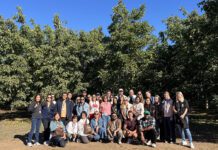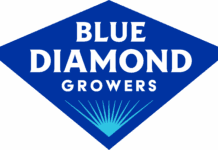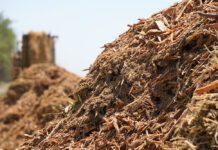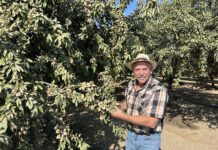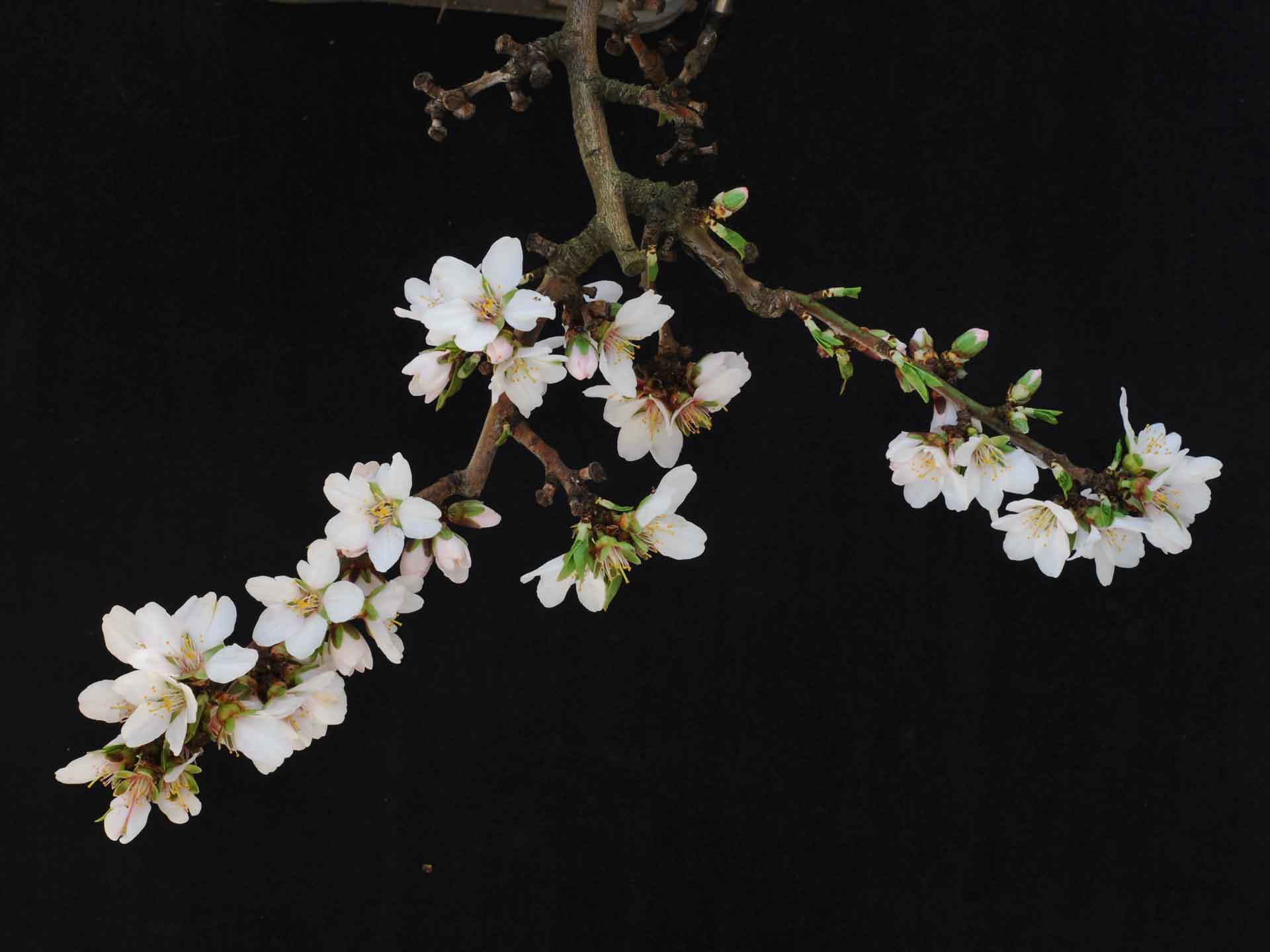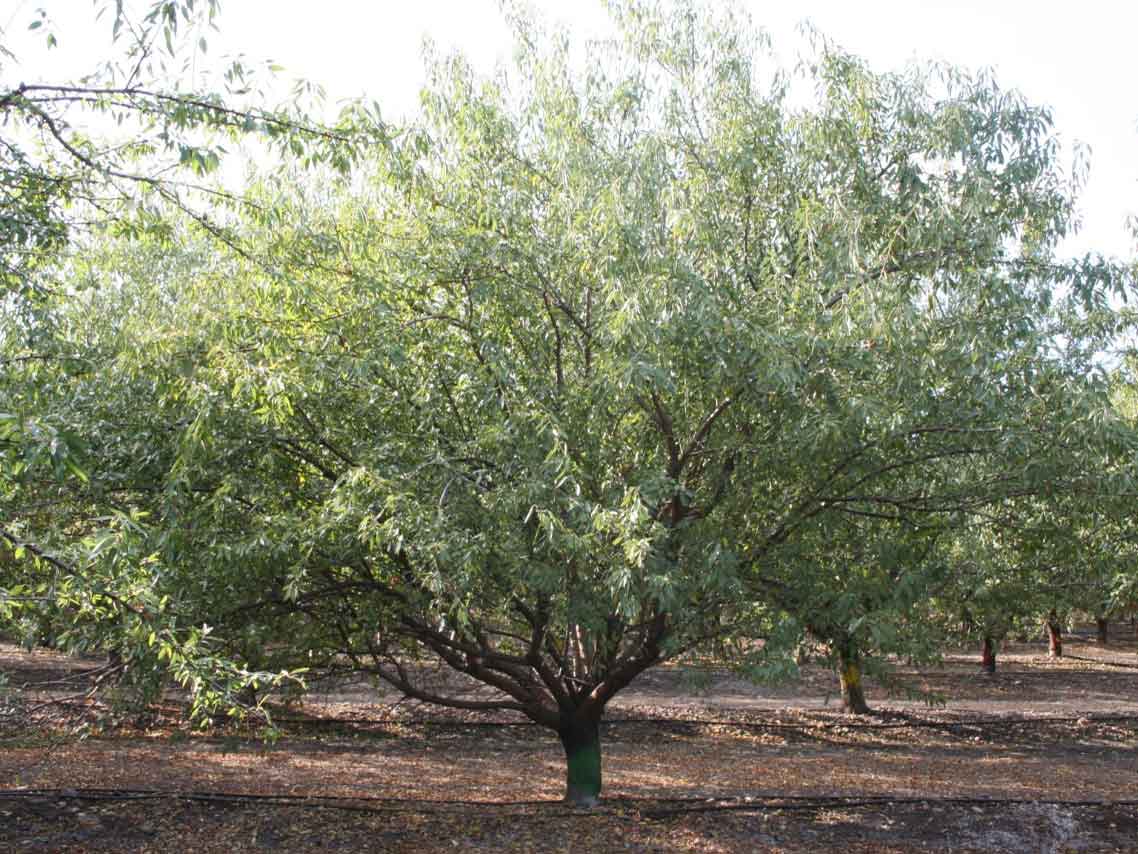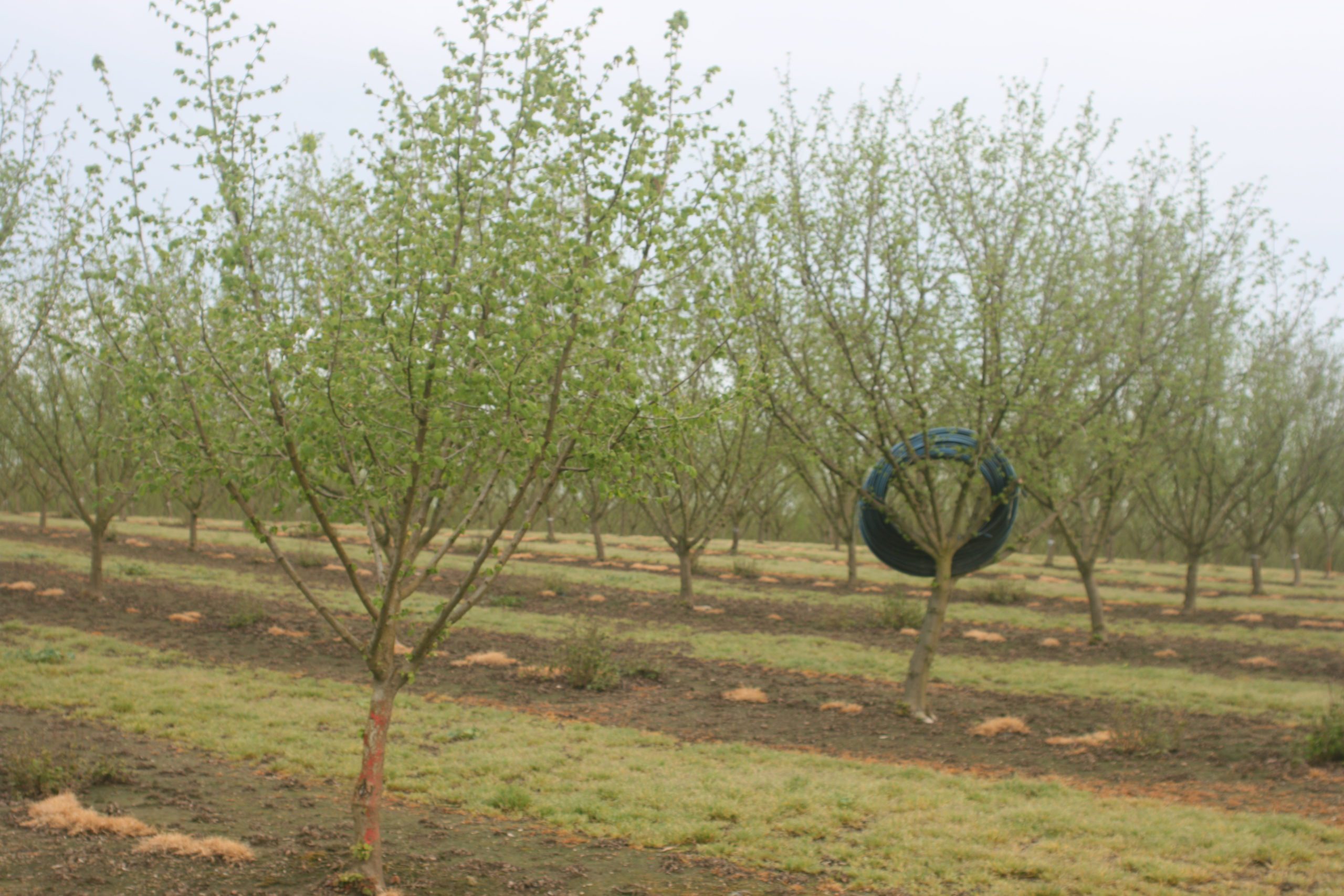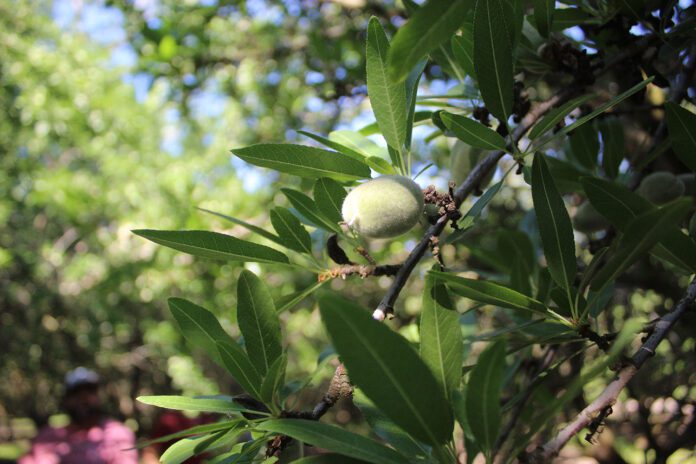
Listen to the audio version of this article. (Generated by A.I.)
In the search for the next generation of high-performing almond varieties, UC researchers are continuing to gather data from long-term regional variety trials planted across the state. Designed to evaluate key yield metrics, disease resistance, harvest performance and nut quality, the trials are part of a multidecade effort to expand genetic diversity and offer growers viable alternatives to Nonpareil.
Current third-generation trials in Chowchilla, Salida and Chico, Calif., established in 2014, include more than 30 almond varieties and experimental selections. Since their planting, over half of the tested varieties have been discarded due to poor commercial potential, ranging from low yields and excessive kernel doubles to nuts that resist mechanical harvest, according to Phoebe Gordon, UCCE orchard systems advisor in Madera and Merced counties, who is the principal investigator for the Chowchilla site.
Gordon said the trial continues to focus on those still worth evaluating. Some, like UCD 18-20, offer strong yield potential but come with trade-offs, such as a higher rate of doubles.
“In some years, UCD 18-20 can have over 20% doubles,” Gordon explained, noting despite processor concerns about high double rates, the variety still ranks among the top yielders at trial sites.
The trial also examines strong performers like the USDA’s Y117-91-03, which Gordon said has been in the top three for a very long time across all sites and will open an earlier harvest window when it is released later this year, harvesting at least seven days before Nonpareil.
Another variety, Jenette, exhibits abundant blossoms and pollination potential, though its small kernel size and sporadic set might limit commercial use. Meanwhile, Burchell Nursery’s Booth variety showed only average early yields but surged in yield later and is one of the most consistently productive varieties in the trials.
Yorizane is the only variety from these trials to be released so far and has done extremely well in early planted commercial orchards.
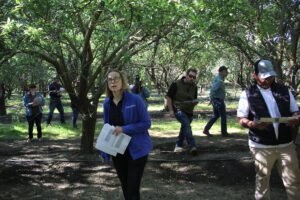
Learning Through Field Trials
UCCE and ABC have hosted a series of trial variety field days across the Central Valley and Northern California this year to give growers a firsthand look. As growers walked through the Chowchilla trial block, Gordon shared details about key characteristics such as shell hardness, pest susceptibility and harvest timing that can influence commercial potential. Explaining the importance of trial design and data collection, she said they have tracked bloom dates, full bloom, hull split, yields and disease incidence since the trees began bearing in 2016.
“Because we have 30 different varieties with staggered harvest dates, we break harvest into three or four rounds, meaning some varieties sit on the tree longer and face more navel orangeworm pressure,” Gordon said, explaining that this approach provides realistic insights into how varieties hold up under commercial conditions.
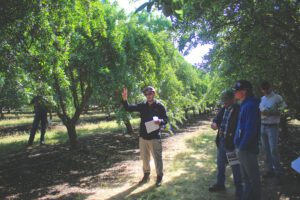
(all photos by K. Platts.)
The trials have revealed that high-yielding varieties often come with hidden challenges, like Bennett-Hickman, which impressed growers with good taste and solid yields but showed vulnerability to heat stress, sometimes resulting in blank shoots.
“They will continue to bear, even without leaves on those sections,” Gordon said, “but if it keeps happening year after year, that’s when trees start to decline.”
Expanding the Genetic Base
The trials also serve a broader purpose by bringing new genetics into the California almond landscape, which has traditionally relied on a narrow genetic base. Many of the UC varieties in the trials represent crosses with wild or lesser-known almond types to improve disease resistance and resilience.
“These trials are basically for the future of the almond industry,” said Sebastian Saa, associate director of agricultural research at the Almond Board of California, which funds the trial. “We’re trying to identify good varieties that have high yields, low disease issues and ideally Nonpareil quality as well.”
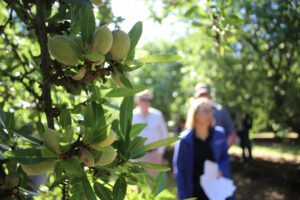
Tom Gradziel, an almond breeder and professor at UC Davis who attended a recent variety trial field day in Chowchilla, explained that the UC breeding program takes a long-term approach, typically requiring at least 20 or more years of data and grower trials before releasing a new variety. He pointed to examples like Kester, which underwent about 25 years of grower evaluation before release, emphasizing the importance of understanding how a tree performs not just in its early years but also in the crucial second decade, when long-term profitability becomes clear.
Gradziel noted that many self-compatible almond varieties trace back to a single parent line, the Italian Tuono variety, raising concerns about inbreeding.
“One of our goals is to diversify that, so most of the UCD varieties have very different sources of self-compatibility and self-fruitfulness, which are two separate traits,” he explained. “Looking at them both as possible varieties on their own, but also as germplasm that the public and private breeders can use into the future and avoid this inbreeding problem.”
Looking Ahead to the Industry’s Future
Saa noted while 80% of the board’s budget goes to marketing, a significant portion supports production research. Many of those research investments help solve challenges like navel orangeworm, improve water and nutrient use efficiency, and increase breeding program success.
“Since the 1970s, we’ve supported long-term evaluations with UC, and the fact that we understand so much about varieties like Nonpareil, Monterey and Carmel is thanks to decades of collaborative work,” Saa said.
Looking ahead, ABC has helped launch a fourth-generation trial where all but two of the 25 experimental varieties are self-compatible, further advancing the industry’s long-term strategy. But Gordon stressed that commercial validation is the next step, and they won’t really know a variety’s potential until growers start planting them in commercial blocks and managing them specifically for that variety.
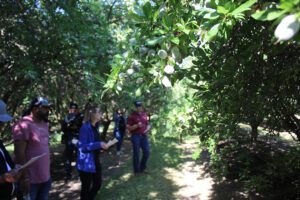
“Research gets us part of the way, but widespread adoption and long-term industry success will depend on grower participation and real-world validation,” Gordon said. “That’s the next step we need.”
Discussions around genetic editing and future breeding methods also came up during the Chowchilla field day. Saa explained that while gene mapping and technologies like CRISPR have helped develop self-fertile Nonpareil trees, significant challenges remain.
“Gene editing is only half of the equation to create a SF Nonpareil tree,” he said. “The second part of the equation is to confirm that the tree grows and performs the same way as a non-self-compatible Nonpareil tree.”
Plus, Saa added, market acceptance, especially in Europe, is still an open question.
The three third-generation variety trials will continue through the 2025 season, with annual reports available at the UC Variety Trial website (fruitsandnuts.ucdavis.edu) and the ABC research database (almonds.us-1.smartsimple.com/files/1513206/f164922/index.html), where you can also find reports from other areas of production research. Results from the current season will be published in early 2026.

Kristin Platts | Digital Content Editor and Social Correspondence
Kristin Platts is a multimedia journalist and digital content writer with a B.A. in Creative Media from California State University, Stanislaus. She produces stories on California agriculture through video, podcasts, and digital articles, and provides in-depth reporting on tree nuts, pest management, and crop production for West Coast Nut magazine. Based in Modesto, California, Kristin is passionate about sharing field-driven insights and connecting growers with trusted information.






